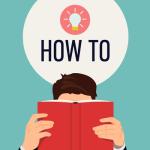The main criticism of the traditional budget is that it does not react to what is...
 Rolling Forecast held great promise when first introduced 20 years ago, but has a mixed track record on actually delivering on hoped-for improvements. However, Microsoft and other firms have successfully implemented a hybrid approach that delivers on the core promises of Rolling Forecast to improve agility, drive performance, and free Finance from the mechanics of the process to enable them to become a value-added partner in the business.
Rolling Forecast held great promise when first introduced 20 years ago, but has a mixed track record on actually delivering on hoped-for improvements. However, Microsoft and other firms have successfully implemented a hybrid approach that delivers on the core promises of Rolling Forecast to improve agility, drive performance, and free Finance from the mechanics of the process to enable them to become a value-added partner in the business.
THE ROOT CAUSES OF FAILURE
“I really thought it was going to change everything,” the Finance Director of a large mid-west company confessed to the audience recent finance conference I attended, “but Rolling Forecast just added more spin cycles without any tangible benefit I could really point to. In the end, the only people that seemed to pay real attention to it were the people in Finance who created it.”
While some companies have had success with Rolling Forecast, this Finance Director's experience is not unique.
The concept of Rolling Forecasts, introduced more than 20 years ago, held great promise. Do away with the annual planning process/ budget. Gain better visibility into the future. Improve the accuracy of forecasts. Become more agile. It seemed to be too good to be true.
And in some cases it was.
The budget didn’t go away. The company didn’t become more agile. Finance didn’t save any time - and they still spent the majority of their time in the mechanics of the process rather than in value-added activity or in partnering with the business.
Why?
- One of the basic criticisms of the traditional annual planning process is that “nobody knows what’s going to happen 12 months from now”. So in a way, it was a leap of faith to believe that a rolling 12-month forecast was going to solve anything on its own. If we have no visibility into what’s going to happen 12 months from now... why would we repeat that exercise every month? For some organisations, looking out 12 months in the case of a rolling 12-month forecast or every 18 months in the case of rolling 18-month, only served to confirm the future was as unpredictable as ever.
- Many companies that implemented Rolling Forecast actually never adjusted their incentive compensation structure. Senior Executives were still paid to achieve annual targets which meant that they continued to focus on their annual commitments made during the Annual Operating Plan (AOP) or budget. That annual process wound up being just as involved and time-consuming as ever. The idea that “the annual plan would just be another Rolling Forecast” proved, in some cases, to be wishful thinking.
- In part, because Senior Executives' bonuses and incentive compensation was still tied to achieving an annual target, people outside of Finance had little reason to care deeply about what Finance pulled together in a rolling 12-month forecast. In those companies, the Rolling Forecast was, at its core, a financial model in Excel -- built and maintained by Finance, and consumed mainly by Finance. It was not actually used to make business decisions or to drive performance.
- Keep in mind that most companies were doing quarterly or monthly forecasting anyway -- even before they considered implementing a Rolling Forecast. The only difference was the forecast they were doing was essentially a balance-of-year forecast, rather than extending into the next fiscal year. So the conceptual value of a Rolling Forecast was predicated in gaining visibility into the next fiscal year while still living in the current fiscal year. But didn't Rolling Forecast advocates say that planning 12 months ahead was not the best use of time because nobody could predict that far ahead? In that case, the value of that extra visibility into the next year was uncertain.
- Lastly, most companies doing some form of traditional planning start early discussions about the AOP sometime just past mid-year. So they were already “looking ahead” into the next fiscal year before the advent of Rolling Forecast.
The point is in companies that did not see transformative results from adopting Rolling Forecast had often failed to make other commensurate and fundamental changes.
THE HYBRID APPROACH
Companies like Microsoft concluded the same thing many Rolling Forecast advocates believe – namely that trying to predict what will happen 12 months from now is not necessarily the most productive use of time. You’re likely to be surprised by something you hadn’t expected or factored in, so the annual 12-month plan can be outdated almost as fast as it is finalised.
And yet… these companies also recognised the value of planning when it’s done well. As General Dwight Eisenhower famously said, “Plans are worthless, but planning is everything.”
Recognising the value in planning, but also the limitations of a long-time horizon, leading companies have adopted 6-month Planning. It's not a crystal ball projection. It’s a full plan, thoughtfully debated and challenged, rigorously developed. But it only looks out 6 months which is the horizon that these world-class companies believe they can reasonably predict and manage.
Here are some other important changes:
- These companies still do a forecast – often quarterly (not monthly) but with extensive capability to do "on-demand" forecasting whenever needed.
- The plan is commonly developed centrally, often with the help of algorithms and Machine Learning (ML) to establish clear stretch targets.
- A "growth mindset" has been instilled so target setting is more about stretching to gain market share (for example) than minimising expectations to guarantee bonus targets are achieved. The growth mindset is coupled with the discipline of understating the investments needed to achieve the growth and investment support becomes a primary role for Finance business partners.
- Executive Compensation is based on achieving the 6-month growth driven targets. In some cases, it’s an “all or nothing” incentive.
- Targets are established at the highest levels, then automatically cascaded down to the lowest level once with the help of algorithms and Machine Learning. Human intervention can then modify the results as required.
- Local Finance typically does not produce departmental budgets, which too can be developed centrally and cascaded down.
- Budgets for routine spending like Office Supplies can be managed centrally at a high level. Machine Learning flags outliers that can then be isolated and assessed, rather than having local Finance teams monitor and manage them.
- The Revenue projection is derived from the pipeline in the CRM system (used to manage Sales and the Sales Process) rather than putting Finance in the middle and shouldering the difficult position of managing expectations.
- Local Finance, free from many of the traditional mechanics of the process, finally have the opportunity to become a true partner in the business, providing decision support and value-added analysis.
- None of this happens overnight, it's a journey over time.
TECHNOLOGY IMPLICATIONS
Planning centrally and cascading targets requires (at a minimum) the ability to make changes “at the top of the house” and have them cascade down automatically on a pro-rata basis with the click of a button. Beyond that, algorithms or Machine Learning can add additional sophistication to that process.
Automatically flagging outliers, like spending on an account that goes beyond a threshold or some statistical probability, should also be part of the solution to free up Finance’s time.
Since revenue planning is central to just about any company’s planning process, the system should be able to fully integrate with Sales Planning & Analytics together with Territory Management and Incentive Compensation. This enables more rigorous “Top-Down Centralised Planning” on the revenue side based on the actual pipeline.
The ability to do scenario planning, where a baseline “business as usual” budget is then adjusted for various investments, is also a requirement. Even better if those investments can each be distinctively captured so various scenarios, with specific investments being included or excluded, can be debated before finalising the committed plan.
While there are other important technology implications, the last one to mention here is Predictive Analytics. This field has grown tremendously over the past couple of years. Analysis that used to take hours or days now takes minutes. For example, one popular system can take 2 years of history and run through more than 50 different sophisticated predictive algorithms in the ARIMA family, and through a “competition” to see which one would have provided the most accurate prediction. It then uses that most accurate algorithm to predict the future.
Rolling Forecast, like all good ideas, evolves over time. The hybrid approach discussed in this article illustrates the next evolution and one that can deliver on the original promise.
Subscribe to
FP&A Trends Digest

We will regularly update you on the latest trends and developments in FP&A. Take the opportunity to have articles written by finance thought leaders delivered directly to your inbox; watch compelling webinars; connect with like-minded professionals; and become a part of our global community.





